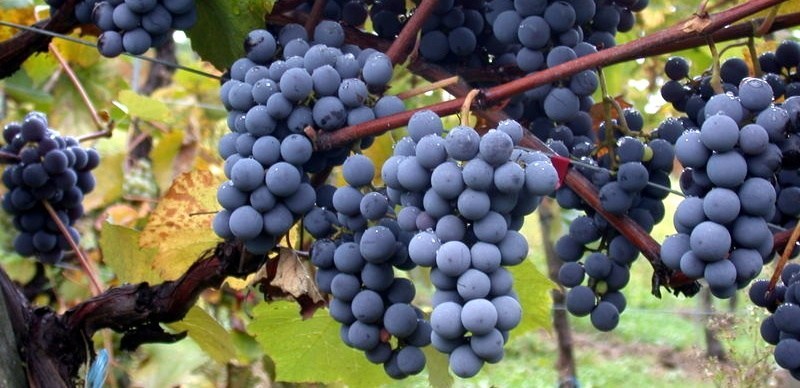Celebrate "China's Grape" Around Beijing With the Second World Marselan Day
People are calling it "China's grape."
Marselan, planted nationwide from monsoonal Shandong to sun-baked Xinjiang, is making medal-winning wines and inspiring a belief it might create a niche for China as Shiraz did for Australia and Malbec for Argentina.
This week, Hulu, The Merchants, and VinVino will hold events focused on the grape as part of the second World Marselan Day (more on that below). But first, why does this matter for China?
Marselan was created in 1961 in France, a cross of Cabernet Sauvignon and Grenache, to get the best from both grapes. It arrived in China 40 years later, one of 14 varieties planted at the Sino-French Demonstration Vineyard just outside Beijing, a government project to see what grapes grow best. While that lineup included top varieties like Merlot and Shiraz, it was the relatively unknown Marselan, which translated to soft, fruity and easy to drink wines, that garnered attention.
Marselan has since spread to every wine region of China, with dozens of wineries selling, or on the verge of selling, their take on this grape. And it has caught the eyes of critics.

At last year’s massive annual wine contest of Concours Mondial, a dozen Marselan from four Chinese regions won medals. A year earlier, a Marselan by Grace Vineyard in Shanxi was top overall red at the Decanter Asia awards. And critics praise the grape.
Nanning-based consultant Julien Boulard has been impressed since his first taste in 2009.
"Just like during my first encounter, Chinese wines made from it recurrently outshined the other entries [at contests]," he writes. "I'd also met several respected wine professionals heaping praises on the varietal, further feeding my curiosity."
It’s not just professionals, either. Wine consumers have been getting excited about Marselan, especially as the drastically different climates of China’s wine regions mean distinct expressions of this grape, from subtle and moody to full-bodied and boozy.
None of this is to say Marselan will become China's most popular grape. The large majority of wine vines here are Cabernet Sauvignon, in deference to France and an aversion to risk. But it does mean that as China battles with pretty much everyone else over Cabernet, the Marselan has been given a chance to carve new territory for the world's taste buds.
Here are three places to try some this week:
TRB has stocked dozens of Chinese wines since it opened near a decade ago. Now its younger sibling Hulu will get in on the act by featuring four Chinese labels during the weekly Wednesday wine tasting on Apr 24 and May 1.
Hulu will have Excelsis Marselan from Shandong, made by Master of Wine student Tong Lili, and among the subtler examples you'll find. Compare that to the fruitier, bolder, spicier Marselan made by Lee Yeanyean from Grace Vineyard. The lineup also includes a Champagne-method bubbly from SunGod in Hebei and a tasty Riesling from Kanaan in Ningxia, thus giving diners a taste of four regions. The meal is RMB 298, with four glasses of wine.
Saturday, Apr 27, is World Marselan Day proper, the birthday of Paul Truel, who created the grape in southern France.
VinVino, which has sold Chinese wines for six years now, will feature Grace Vineyard Marselan at RMB 58 per glass. For those who would like more local flavor, the restaurant and tapas bar will have Chandon sparkling wine from Ningxia and Grace Reserve Chardonnay at RMB 58, too.
Finally, relatively new bar The Merchants will have winery reps on hand on Apr 27 for its Marselan tasting from 7pm to 10pm. There will be a trio of Marselans, including Amethyst from Hebei and Tiansai from Xinjiang, with a tasting flight at RMB 99. That's three chances to raise a glass to what might well become China's grape.
Learn more about Marselan at worldmarselanday.com or participate simply by enjoying some Marselan, and posting and tagging a photo of it with #worldmarselanday on your social media of choice.
Hungry for more? See all of this week's new food promotions and news, right here.
Jim Boyce writes about wine in China regularly on his blog grapewallofchina.com.
Photos courtesy of Grape Wall of China







